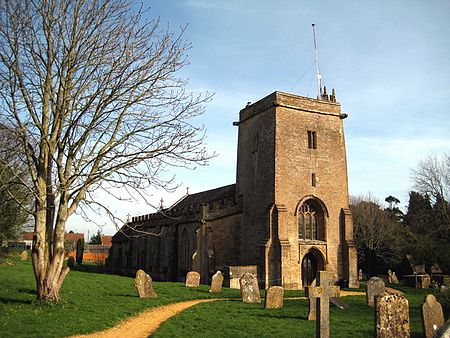Merriott

Merriott is a village and civil parish in Somerset, England, near the town of Crewkerne and 7 miles (11.3 km) west of Yeovil in the South Somerset district. The village has a population of 1,979.On Church Street, there is a well-preserved tithe barn, which is used by local organisations including the playgroup, badminton club and a Morris dancing side (Dr Turberville's Morris). The village is home to Merriott Rovers F.C. who play in the Perry Street and District League, spanning Somerset, Dorset and Devon. Also situated in Merriott is a Co-op and all-purpose food store. It has two pubs: the 17th century King's Head and the 19th century Swan.The parish boundary includes the River Parrett which is crossed by the Bow Bridge. Next to it is Bow Mill House, with its attached watermill which dates from the 17th century. Tail Mill was used for sail cloth manufacture.
Excerpt from the Wikipedia article Merriott (License: CC BY-SA 3.0, Authors, Images).Merriott
Manor Drive,
Geographical coordinates (GPS) Address Nearby Places Show on map
Geographical coordinates (GPS)
| Latitude | Longitude |
|---|---|
| N 50.9092 ° | E -2.7907 ° |
Address
Manor Drive
Manor Drive
TA16 5PB
England, United Kingdom
Open on Google Maps







